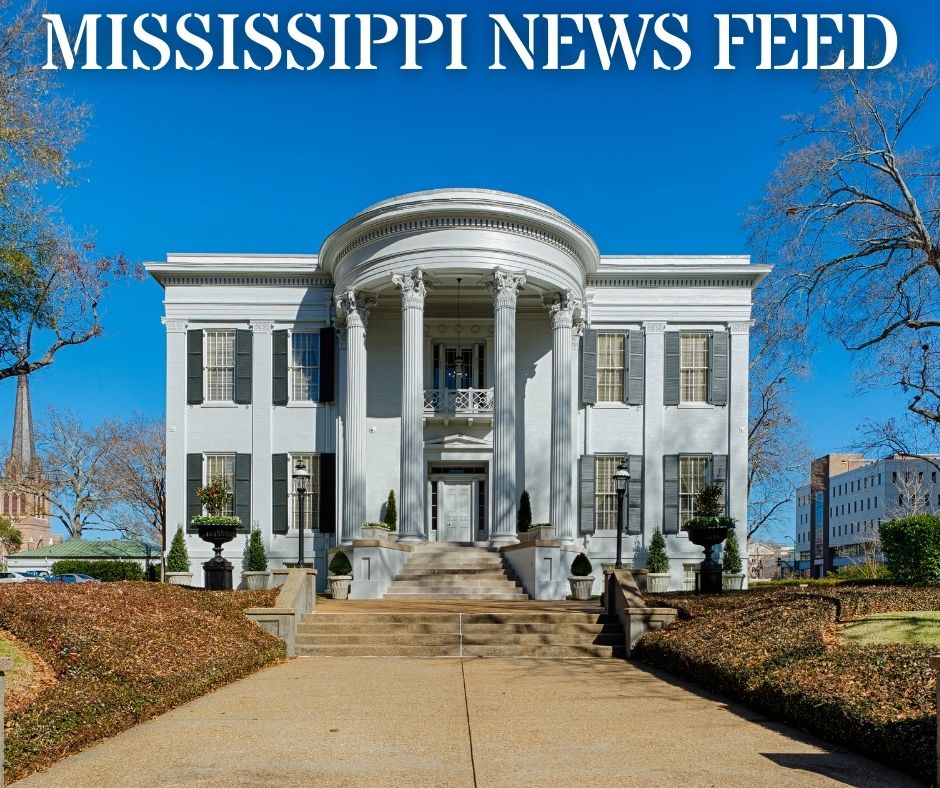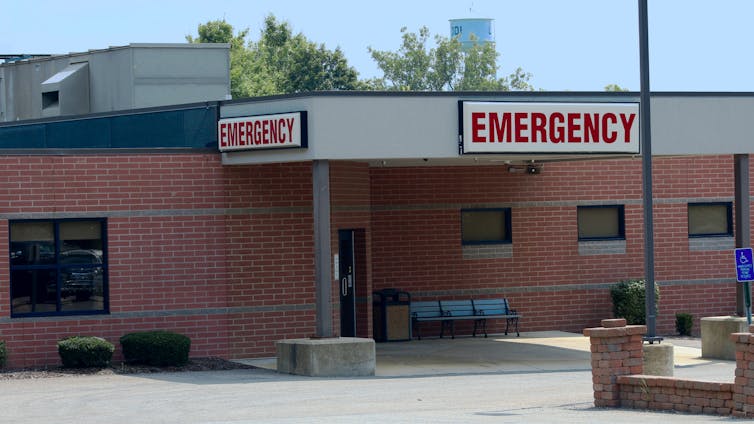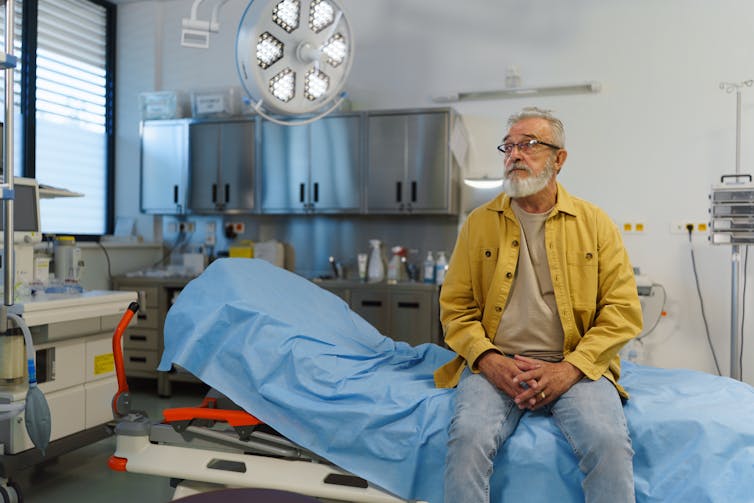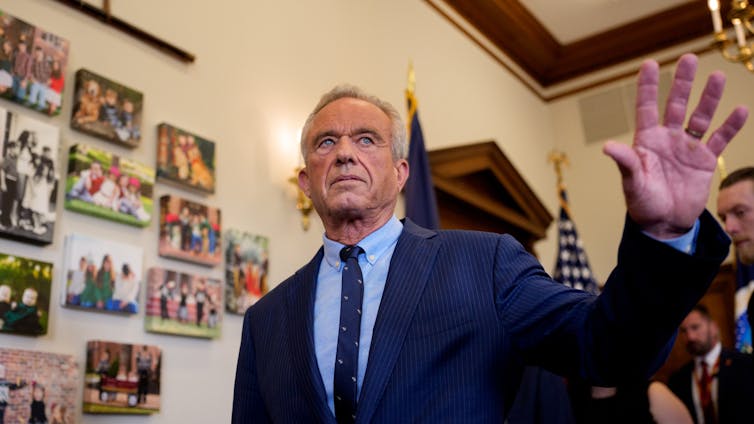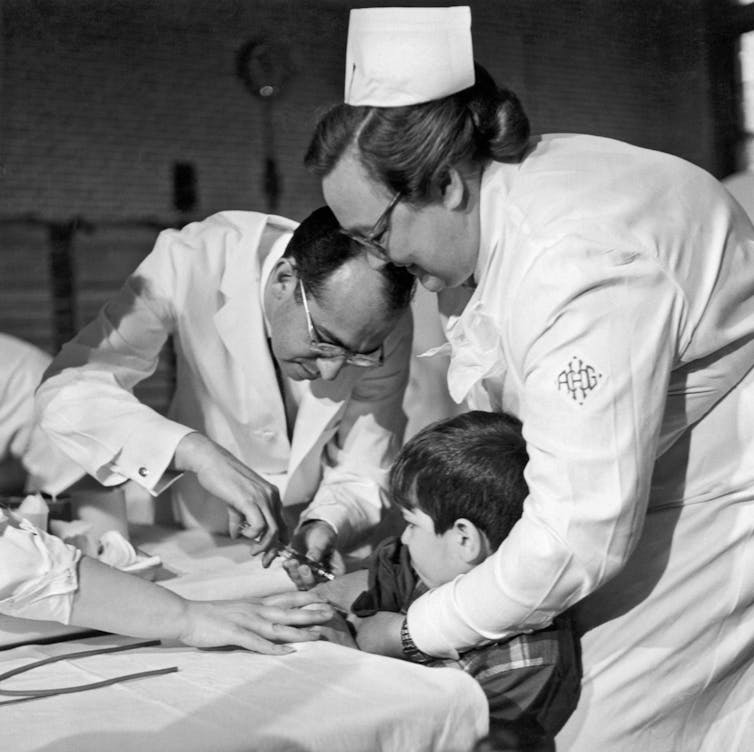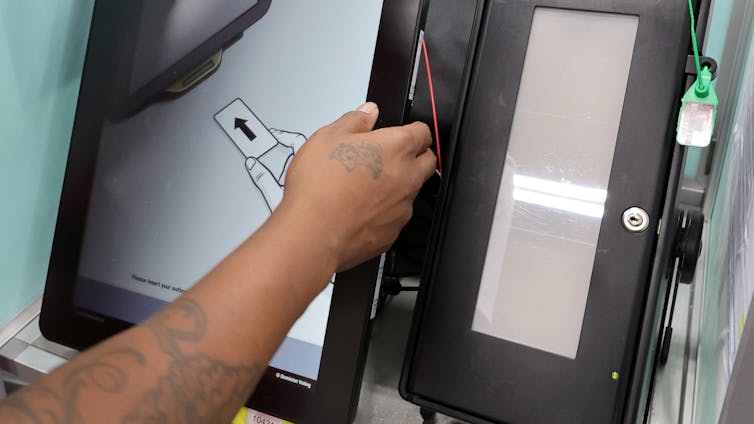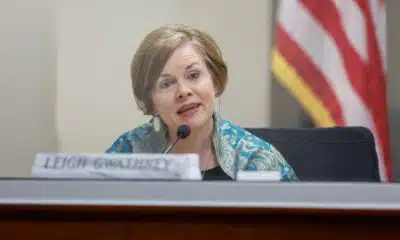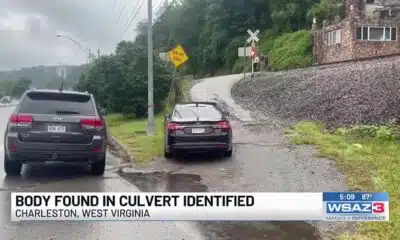
Rebecca Droke/AFP via Getty Images
Danielle Lee Tomson, University of Washington; Melinda McClure Haughey, University of Washington, and Stephen Prochaska, University of Washington
In the immediate hours after the assassination attempt on former president Donald Trump on July 13, 2024, social media users posted the same videos, images and eyewitness accounts but used them as evidence for different rumors or theories that aligned with their political preferences.
Among the deluge of rumors, one TikTok creator narrated the instantly iconic photo of Trump raising his fist, ear bloodied as he emerged from the Secret Service scrum. “People are wondering if this photo is staged?” His answer: “Yes.”
People across the political spectrum, including President Joe Biden, questioned why the Secret Service had failed to prevent the attack. But then some people took this critique further. An influencer on the social media platform X posted an aerial photo and asked how an armed assailant could make it to an unsecured rooftop, concluding, “This reeks of an inside job.”
As researchers who study misinformation at the University of Washington’s Center for an Informed Public, we have seen groups of people coming together during previous crises to make sense of what is going on by providing evidence and interpreting it through different political or cultural lenses called frames. This is part of a dynamic process scholars call collective sensemaking.
Spreading rumors is a part of this process and a natural human response to crisis events. Rumors, regardless of their accuracy, help people assign meaning and explain an uncertain or scary unfolding reality. Politics and identity help determine which frames people use to interpret and characterize evidence in a crisis. Some political operatives and activists may try to influence these frames to score points toward their goals.
In the aftermath of the assassination attempt, our rapid response research team observed rumors unfolding across social media platforms. We saw three politically coded frames emerge across the spectrum:
-
claiming the event was staged
-
criticizing the Secret Service often by blaming Diversity Equity and Inclusion initiatives
-
suggesting the shooting was an inside job
‘It was staged’
On the anti-Trump extreme, a rumor quickly gained traction claiming the shooting was staged for Trump’s political gain, though this has slowed as more evidence emerged about the shooter. One creator questioned if the audience were crisis actors because they did not disperse quickly enough after the shooting. Others pointed to Trump’s history with World Wrestling Entertainment and reality television, suggesting he had cut himself for dramatic effect like pro wrestlers. Entertainment professionals weighed in, saying Trump had used fake blood packets found in Hollywood studios.
The staged rumor resonated with a conspiratorial frame we’ve seen people use to process crisis events, such as accusations of a false flag event or crisis actors being used to facilitate a political victory.
Secret Service failings
On social and mainstream media, we saw questioning across the political spectrum of how the Secret Service failed to protect a presidential candidate. Many compared videos of the Secret Service’s swift reaction to the 1981 assassination attempt on President Ronald Reagan, suggesting their reaction with Trump was slower.
However, some politicized this frame further, blaming DEI for the Secret Service’s failure. The claim is that efforts to increase the number of women in the Secret Service led to unqualified agents working on Trump’s security detail.
Blaming DEI is a common and increasingly used trope on social media, recently seen in rumors following the Baltimore bridge collapse and the Boeing whistleblower crisis. Pro-Trump creators shared images critical of female Secret Service agents juxtaposed against celebrated images of male service members. This is a framing we expect to continue to see.
Adjacent to this critique framing, a rumor took hold among pro-Trump communities that the Secret Service had rejected Trump’s additional security requests, which the GOP had been investigating — a claim the Secret Service has denied. This narrative was further fueled by recent proposed legislation calling for the removal of Trump’s Secret Service protection if he were sentenced to prison following a conviction for a felony.
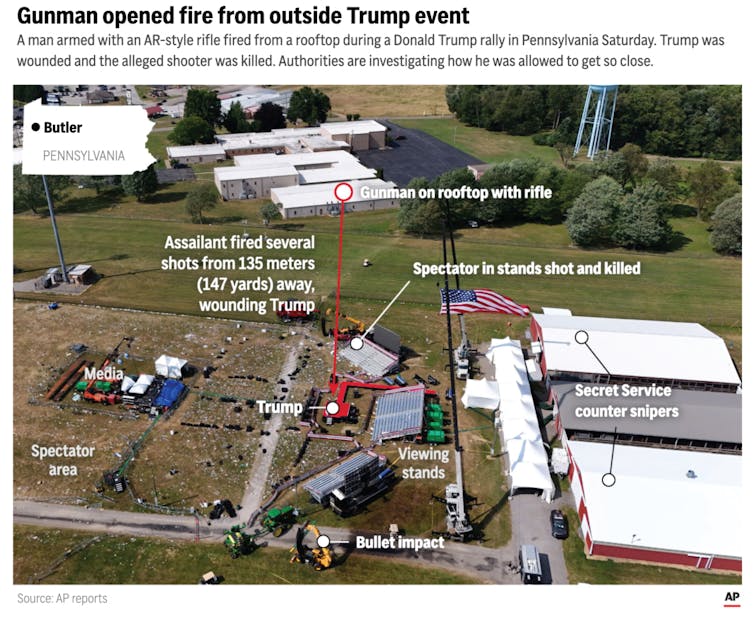
AP Graphic
‘It was an inside job’
Highlighting many of the same critiques and questions of how the shooter could get to an unsecured rooftop, other influencers suggested the shooting must have been an inside job. In retweeting a popular pro-Trump influencer, Elon Musk speculated that the mistake was either “incompetence” or “deliberate.” A popular post on X – formerly Twitter – tried to make sense of how a 20-year-old could outsmart the Secret Service and concluded by insinuating the failure was potentially intentional.
These inside job speculations are similar to the rumor that the shooting was staged – though they emerged slightly later – and they align with claims of false flag operations in previous crisis events.
Rumor-spreading is human nature
As the crisis recedes in time, rumors are likely to persist and people are likely to adjust their frames as new evidence emerges – all part of the collective sensemaking process. Some frames we’ve identified in this event are likely to also evolve, like political critiques of the Secret Service. Some are likely to dissipate, like the rumor that the shooting was staged.
This is a natural social process that everyone participates in as we apply our political and social values to rapidly shifting information environments in order to make sense of our realities. When there are intense emotions and lots of ambiguity, most people make mistakes as they try to find out what’s going on.
Getting caught up in conspiracy theorizing after a tragedy – whether it’s for political, social or even entertainment reasons – is a common human response. What’s important to remember is that in the process of collective sensemaking, people with agendas other than determining and communicating accurate information may engage in framing that suits their interests and objectives. These can include foreign adversaries, political operatives, social media influencers and scammers. Some might continue to share false rumors or spin salacious narratives for gain.
It’s important not to scold each other for sharing rumors, but rather help each other understand the social dynamics and contexts of how and why rumors emerge. Recognizing how people’s political identities are intentionally exploited – and even just incidentally make people susceptible – to spread false rumors may help them become more resilient to these forces.
Danielle Lee Tomson, Research Manager, Center for an Informed Public, University of Washington; Melinda McClure Haughey, Graduate Research Assistant, Center for an Informed Public, University of Washington, and Stephen Prochaska, Graduate Research Assistant, Center for an Informed Public, University of Washington
This article is republished from The Conversation under a Creative Commons license. Read the original article.









